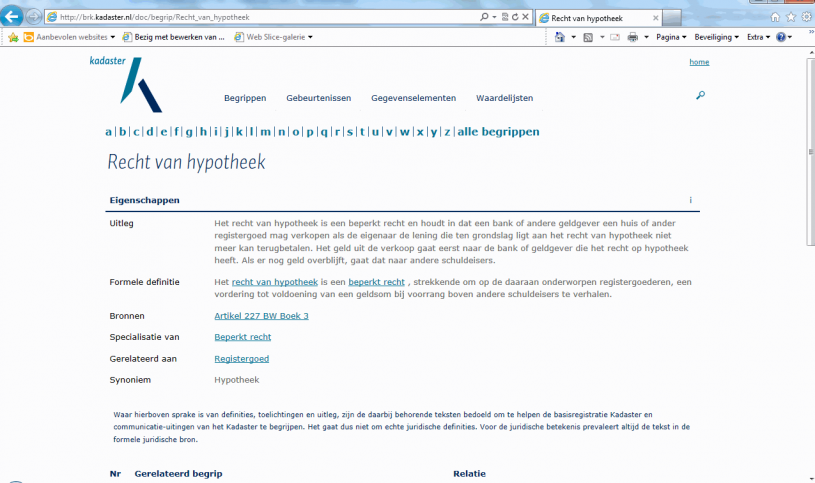Nominees

The Linked Data Theatre service (in Dutch we called it ‘kenniskluis’) is an online service that serves linked data of a number of key registers. The online service is created in a joined effort by the Dutch land registry (Kadaster) and Ordina, a Dutch IT service provider.
The Linked Data Theatre itself is an open source application. The application provides an innovative way of presentation datasets as linked data by:
- Extraction of the data from existing datasets;
- Serving linked data via content negotiation in machine readable formats as json-ld, rdf/xml and turtle;
- A human-friendly presentation of the linked data in tabular, graphical and geospacial presentation, using frameworks like Bootstrap, D3.js and Leaflet.js;
- Using Linked Data standards as SKOS and Dublin Core for the representation of the knowledge about the data;
- Using Linked Data standards as RDFS, OWL, DCAT and SHACL for the representation of data models and metadata;
- Relating the knowledge about SKOS concepts and their source in the formal law to the OWL classes in which these concepts are represented;
- Representing the data itself.
At this moment, the project has completed the description of two key registries and the description of the terms and concepts that are used by the Kadaster. We are working on a third key register, the Dutch topographic map (BRT). For the public key register ‘Addresses and buildings’ (BAG), the data itself (65 million triples) is made available as linked data. The publication of de concepts, metadata and data of the Dutch topographic map is planned in the 4th quarter of 2015.
The services are publicly available at the websites brk.kadaster.nl, bag.kadaster.nl, tax.kadaster.nl and brt.kadaster.nl. The website at tax.kadaster.nl has a visitor’s rate of 500 unique visitors per week (based on IP-numbers). The technology is robust enough for the Dutch land registry to host their official concept catalog.
The Linked Data Theatre is potentially usable in a wide variety of domains. It supports the use case of making structured data available in the public domain, using the LOD standards and making use of the nice features of HTML5 for a human-friendly presentation. Spin-offs of the original service have been used (to our knowledge) in at least three different domains: banking, tax and infrastructure.
The linked data from the current service is consumed by other catalogs, to create a network of key registers and data consumers.